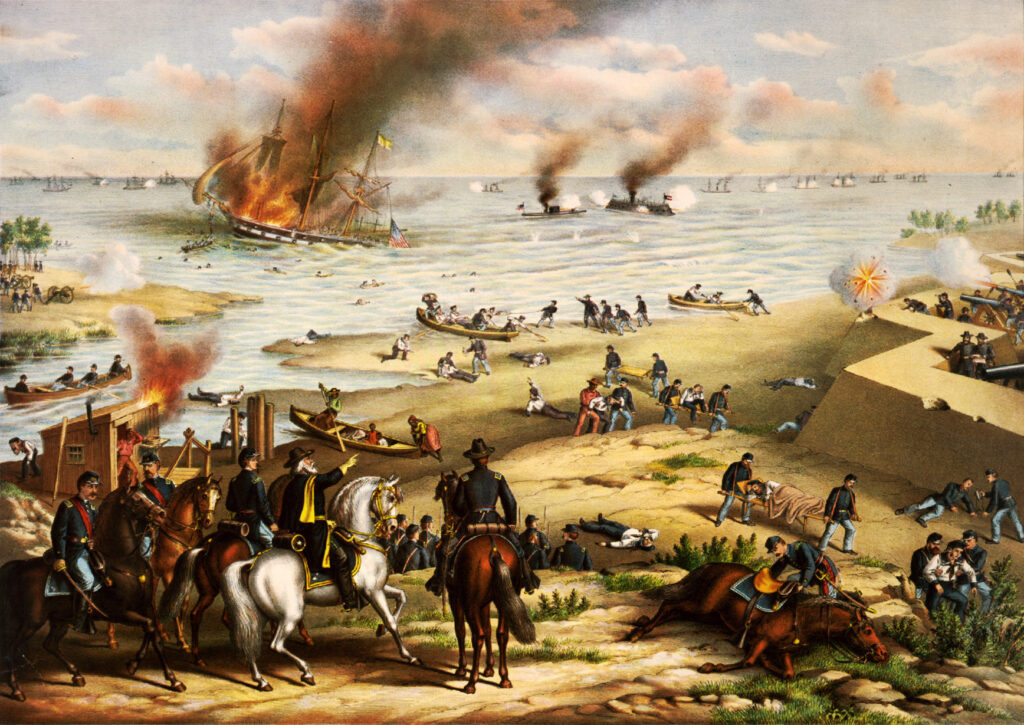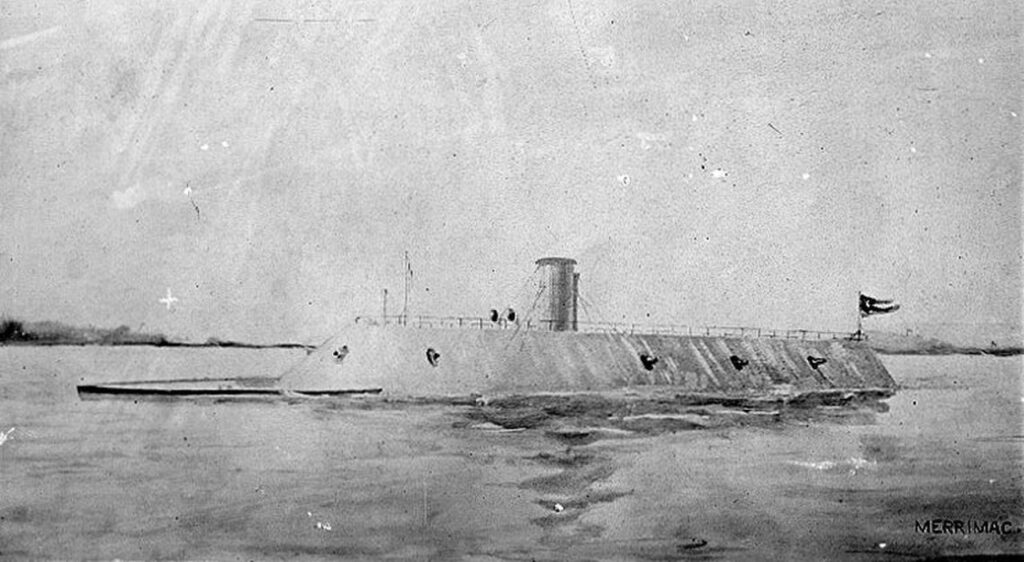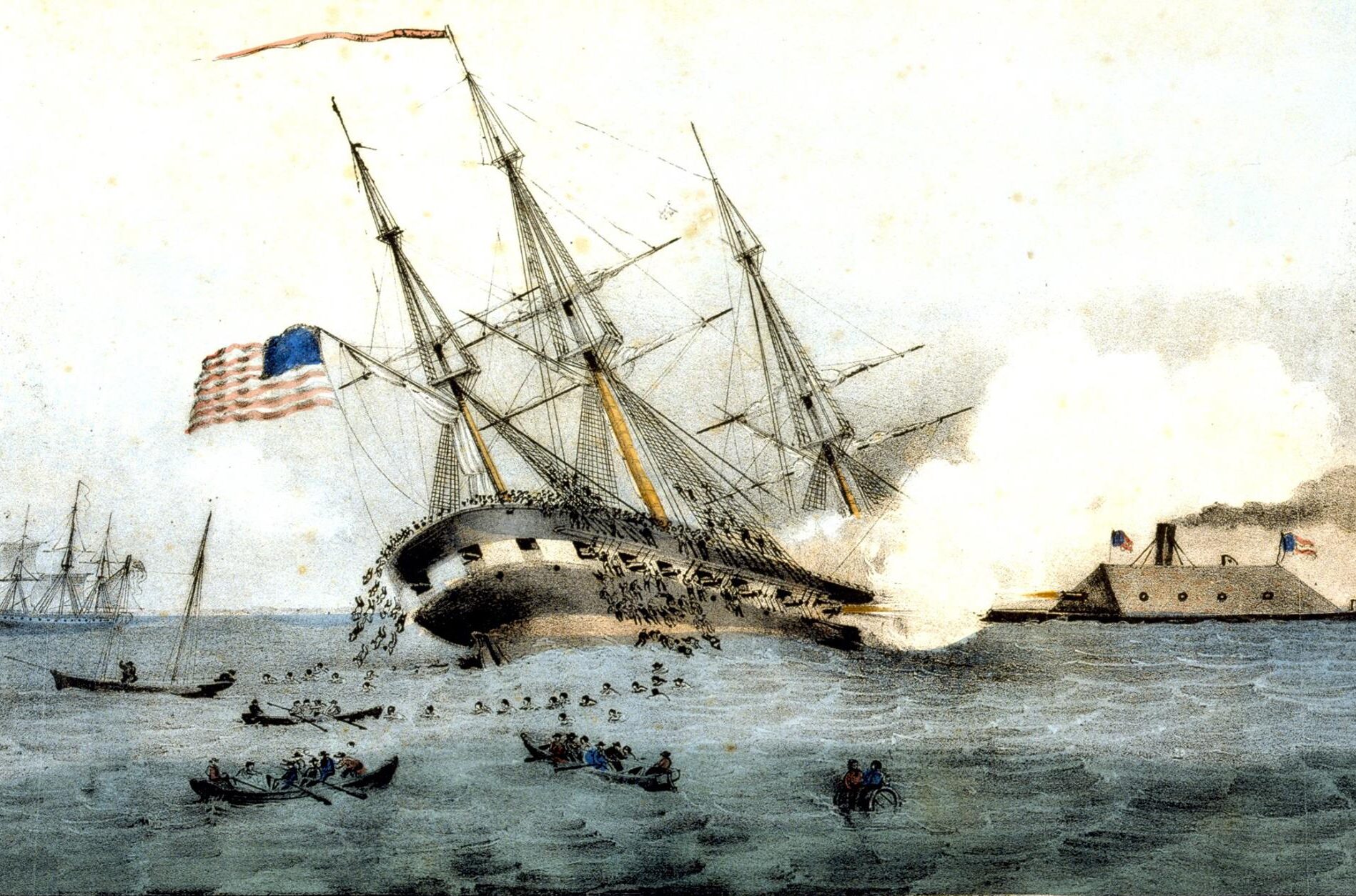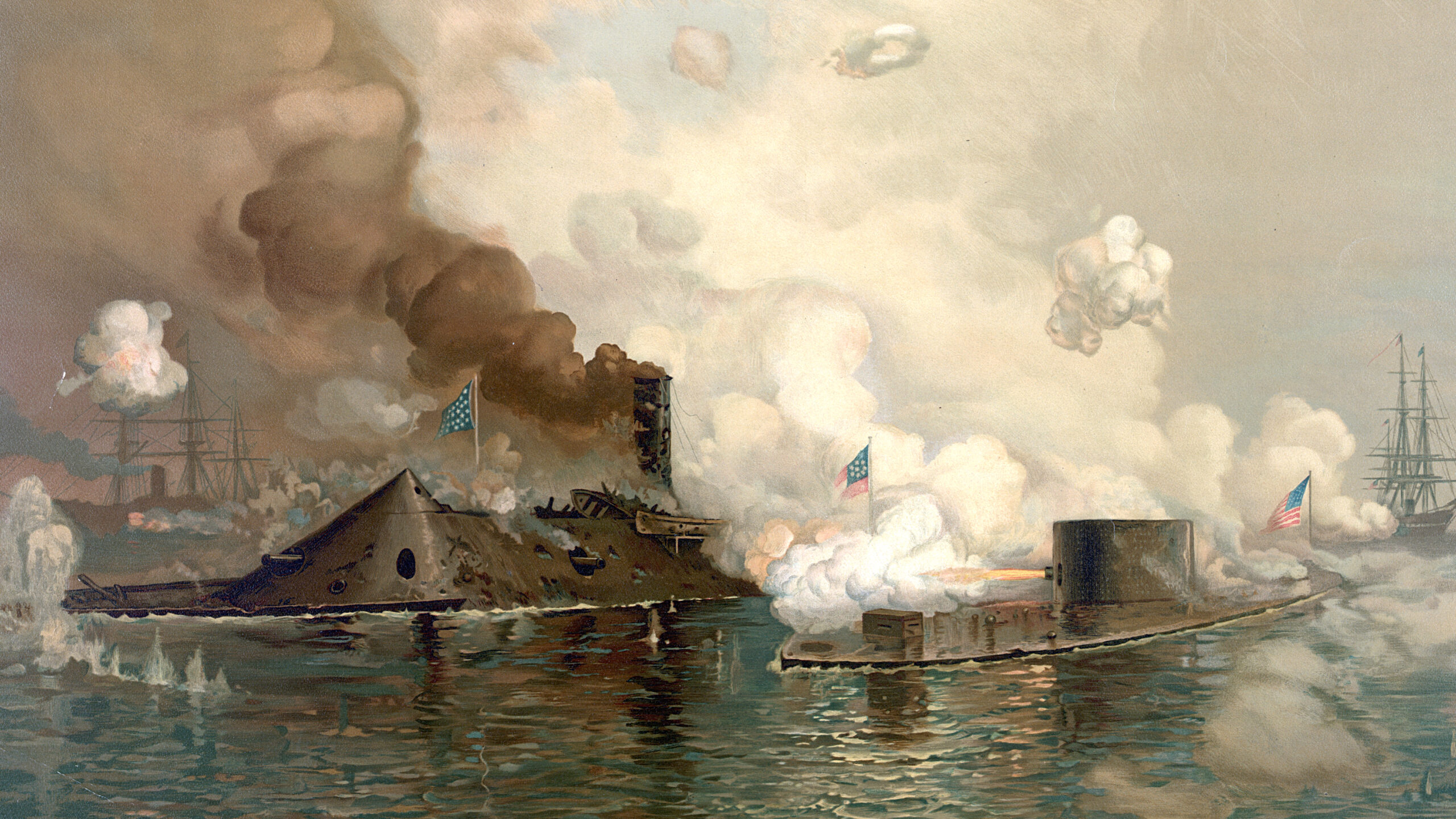After the attack on Fort Sumter in South Carolina, the Union developed an overall strategy to defeat the Confederates. Later dubbed “the Anaconda Plan,” it required the Union to capture control of the Mississippi River, effectively splitting the Confederacy in two while blockading Southern ports to cripple the South’s economy and prevent it from acquiring supplies.

This plan was derided at first because the blockade wasn’t considered aggressive enough by Union generals, but it turned out to be extremely effective. The rebels felt the Union blockade long before they felt the retribution of the Union Army – and almost immediately began finding ways to beat the blockade. On March 8, 1862, a new kind of ship would be put to the test for the first time, hoping to punch a hole in the Union Navy.

The Battle Was the First Engagement of Ironclad Warships
One of the keys to Union seapower during the Civil War was the development of ironclad warships. The development of heavier naval guns and explosive shells made wooden-hulled ships extremely vulnerable to these weapons, and the United States was an early adopter of armored hulls. Secretary of the Navy Gideon Welles had decided to build ironclads when the Civil War started but had yet to complete one.
When Virginia seceded from the Union, the Commander of Gosport Navy Yard in Virginia (now the Norfolk Navy Shipyard) burned all the ships he could tow to friendly waters as they sat in the Navy yard. The destruction of the yard was far from complete, and when the Confederacy took control of Portsmouth on the south side of Hampton Roads, it also took a number of critical stores.

As a result, the rebels were able to rebuild the yard and use its supplies, which included heavy naval guns, gunpowder, and the hull of a Union steamship, the USS Merrimack. They raised the Merrimack and converted it into an ironclad steamer with 12 guns of various types. In little less than a year, the Merrimack was rechristened the ironclad CSS Virginia.
But while the rebels controlled the southern side of Hampton Roads, the Union controlled the mouth of the James River and the exit to the Chesapeake Bay. To complicate matters for the rebels, the Union knew they were building an ironclad and were rushing to complete one of their own, the USS Monitor.
The Confederates would finish the Virginia first, however, beating the Union to the punch by a matter of days. On March 7, CSS Virginia and its five support ships steamed out of Portsmouth to engage the Union Navy. On March 8, Virginia got into a shooting match with the USS Cumberland before ramming the Union warship on its starboard bow, sinking it.

The USS Congress, attempting to flee to shallow water, ran aground and was forced to surrender to the Confederates but would catch fire and burn. USS Minnesota would also run aground while fleeing but was spared from destruction. The USS Monitor, still unfinished, was rushed from Brooklyn, New York, to Hampton Roads to meet Virginia’s firepower.
The Battle of Hampton Roads: March 9, 1862
On March 9, 1862, the first Union ironclad and the first Confederate ironclad engaged in the first battle between armored warships. The Battle of Hampton Roads has major significance. Virginia was slower, and its heavy guns had a hard time hitting the Monitor. Monitor engaged the rebel ironclad at point-blank range, but neither was able to strike a decisive blow. Virginia had been damaged in ramming the Cumberland, and Monitor’s captain had been blinded by a gunpowder explosion.
Ultimately, the Virginia was forced to retreat back to the navy yard, unable to break the Union blockade. Virginia would never be seaworthy and was more of a floating battery of guns in the James River. When Union troops descended on Norfolk in 1862, the Confederates scuttled the ship rather than let it fall into Union hands.
Read About Other Battlefield Chronicles
If you enjoyed learning about the Battle of Hampton Roads, we invite you to read about other battlefield chronicles on our blog. You will also find military book reviews, veterans’ service reflections, famous military units and more on the TogetherWeServed.com blog. If you are a veteran, find your military buddies, view historic boot camp photos, build a printable military service plaque, and more on TogetherWeServed.com today.

0 Comments